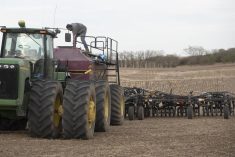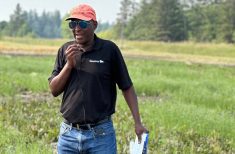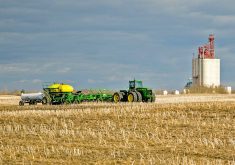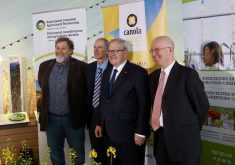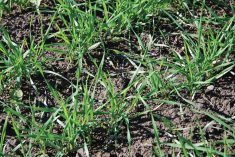Farmers who switch to zero tillage may brag about sequestering climate-altering carbon in their soil. But if they also drain a few swamps on their land, they’re just spewing hot air – or rather, greenhouse gases.
That’s called “leakage” in the carbon credit market: the taking on of one agricultural practice to offset greenhouse gas emissions, but not accounting for another that might be emitting carbon.
It’s important, said Ducks Unlimited researcher Pascal Badiou, in a presentation at the recent Mandak Zero- Tillage Association annual general meeting, because wetlands represent enormous repositories of soil organic carbon (SOC).
Read Also

Still hard to predict precise fertilizer payback
Despite decades of advances, international research finds no clear answer for where and when adding nutrient will fail to boost growth.
And before farmers can start cashing cheques for no-till farming, they may also have to prove that they are leaving their swamps, potholes and sloughs alone because they represent a key factor in carbon offset mechanisms.
“For example, just by draining six hectares of wetlands on your 2,000-hectare zero-till farm, you can essentially wipe out all the gains you made in one year through zero-till farming,” said Badiou.
RICH IN NUTRIENTS
Wetlands are rich in nutrients, and get richer over the years as plants grow, die and become incorporated into the muck. The organic matter gets deeper over time, essentially acting as a storehouse for carbon. If the wetland is drained, the process reverses, and the carbon is released into the atmosphere.
Badiou’s findings came in part from the Agriculture and Wetlands Greenhouse Gas Initiative led by DUC, AAFC, and a number of universities across the country, which consisted of multiple subprojects under the same umbrella. Some of the work was done on the pothole-studded MZTRA farm north of Brandon.
Data was gathered at 22 sites, from uplands to restored wetland sites and original wetlands, using an array of tools including soil cores, water samples and GHG sampling using static vented chambers in spring, midsummer and late summer.
Results show that the older the wetland, the more carbon it stores, said Badiou.
Long-term restored wetlands showed 165 tonnes of SOC per hectare, compared to just 121 tonnes/hectare for new restored wetlands, and 205 t/ha in “reference” wetlands, or those that were in their original, unaltered state.
SEQUESTRATION
Using those figures, they were able to calculate the value in terms of GHG sequestration – and carbon offset values – that wetlands represent.
“Essentially, 89 tonnes per hectare of carbon are lost when you drain a wetland,” said Badiou. “Assuming a duration period of 33 years, we estimate that these wetlands would sequester about 2.7 tonnes of carbon per hectare per year.”
In the Prairie pothole region, anywhere from 50 to 90 per cent of all wetlands have been lost since the land was settled and converted to agriculture. In the zone south of Winnipeg to the United States border, the figure rises to 98 per cent.
The process is continuing, with wetland losses amounting to about 0.31 per cent per year in the three Prairie provinces.
The remaining carbon stored in the region, based on the 205 t/ha value for pristine wetlands, is roughly 200 million tonnes in Alberta, 357 million tonnes in Saskatchewan, and 67 million tonnes in Manitoba.
Each year, wetland losses are estimated at 3,200 ha in Alberta, 5,500 ha in Saskatchewan, and 2,200 ha in Manitoba.
AMOUNT VARIES
Wetlands also produce methane, a significant greenhouse gas. However, research shows that the amount generated depends largely on whether it’s a wet or dry year, said Badiou.
The effect appears to be related to sulphate levels in the water, which hinder methane production. When large amounts of fresh water come into a swamp, the sulphate is diluted, and methane emissions rise.
Nitrous oxide, another greenhouse gas, was not produced in significant quantities in wetlands, the research showed.
Restoring wetlands yields a net sequestration rate of 3.25 tonnes of CO2 equivalents per hectare, or about 0.9 tonnes of carbon/ha/ year.
There are other benefits from restoring wetlands, he added, including biodiversity, water quality, and protection from flooding and drought.
daniel. [email protected]
———
“Forexample,justbydrainingsixhectaresofwetlandsonyour2,000-hectarezerotillfarm,youcanessentiallywipeoutallthegainsyoumadeinoneyearthroughzerotillfarming.”
– PASCAL BADIOU


